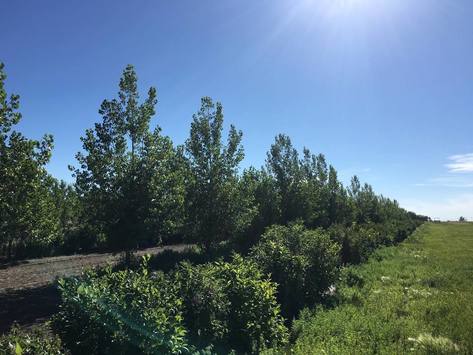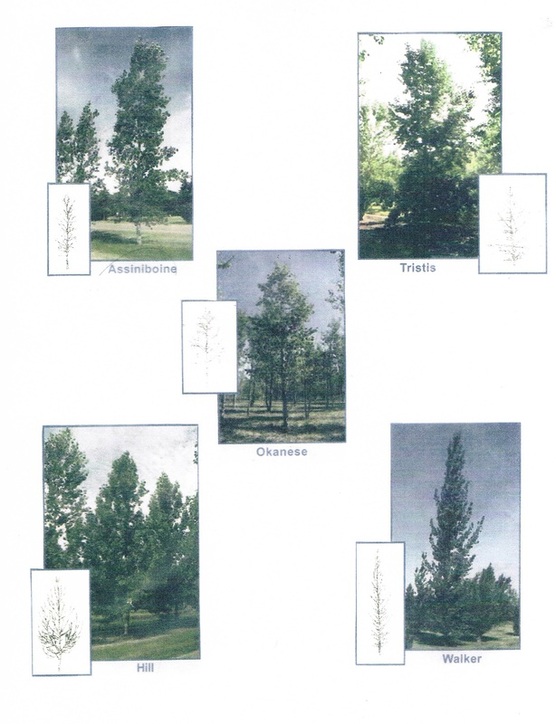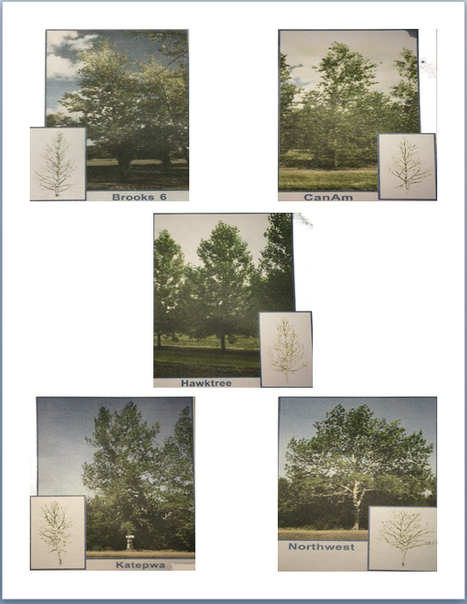- Home
- Store (online purchase)
- Store (irrigation supply online purchase)
- 2022 Planting Catalogue
- HELP Tree Order Form ( non online purchase)
- Very Small Tree Projects
- Tree Packaging and Shipping
- HELP Tree Policies
- Shelterbelt Design Examples
- Technical Tree Education
- Assisted Agroforestry
- Planting and Mulching Instructions
- Contact Us
- Frequently Asked Questions
- BlogRodney
- Photo Gallery
- Tree Pest and Disease Issues
- Willows for Municipalities Program
- HELP International tree seedlings for sale for shelterbelts and environmental programming
- Willow
HYBRID POPLAR RECOMMENDATIONS
Here, we compare five hybrid poplar varieties that have been recommended for the prairies: Prairie Sky Poplar, Assiniboine, Tristis, Okanese, Walker & Hill. At present only Prairie Sky Poplar, Okanese, Walker & Assiniboine are available in our Shelterbelt Centre.

PRAIRIE SKY POPLAR:
Prairie Sky is a hybrid poplar developed by Agriculture Canada.
Prairie Sky is a hybrid poplar developed by Agriculture Canada.
- Full bushy look from bottom to top compared to Okanese, Assiniboia and Walker.
- Male clone so has no seeds and therefor no fluff.
- Very fast growing equal to that of Okanese and Walker varieties.
- Can produce branches near the ground...pruning branches off the bottom meter of trunk is optional. Stooling branches may return from base of trunk after pruning.
- At maturity tree can reach 60 feet in height and 20 feet in width.

ASSINIBOINE:
HILL:
TRISTIS:
WALKER:
Other Thoughts on Poplars for Shelterbelts:
Walker is for those who don't care about aesthetics but want the best snow and wind stoppage. Walker is one of the only poplars whose branches growth from the trunk almost right at the ground; its low branches stop ground winds and snow drifts the same way that brush like Cariganna or Chokecherry does.
For most of the other hybrid poplar varieties, including Hill and Okanese, the branches start one foot or more up the main trunk. these don't stop ground snow drift but many consider them more aesthetically pleasing and of course they require less pruning for those who want to create a more pole-like tree trunk without branches on the first few feet.
Walker and Hill are both female, so they both produce seeds, but with reduced fuzz compared to a cottonwood poplar. The Okanese and the Assiniboine on the other hand is a male clone and produces no seeds or fuzz.
Note the shape differences; Walker is broad at bottom and narrow on top whereas Hill is more bluffier shaped. The Okanese is slightly less dense but very fast growing like the Walker.
There are more varieties of Hybrid Poplar as shown below:
- Originated from Indian Head.
- Moderate growth (0.80 - 1.00 m/year).
- Upright form. Narrow crown with branch angles <45 degree.
- Moderately vulnerable - periodically susceptible to low temperature damage.
- Disease resistant.
- Use for: Phytoremediation, riparian buffers, and shelterbelts.
HILL:
- Originated from Indian Head.
- Moderate growth (0.80 - 1.00 m/year).
- Semi-right form. More spreading than upright with branch angle approaching 45 degree.
- Slightly vulnerable - clone very rarely affected by low temperature.
- Moderately susceptible to disease.
- Use for: Phytoremediation, poplar farming, riparian buffers, and shelterbelts.
- OKANESE:
- Originated from Indian Head.
- Fast growth (> 1.00 m/year).
- Semi-right form. More spreading than upright with branch angle approaching 45 degree.
- Not vulnerable - clone rapidly attains maximum cold hardiness and low temperature damage is extremely unlikely. HELP field research shows Okanese is the least cold hardy, Prairie Sky poplar is second least cold hardy; then all the others are quite to very cold hardy; Hill poplar is cold and drought hardy.
- Disease resistant.
- Use for: Phytoremediation, riparian buffers, and shelterbelts.
TRISTIS:
- Moderate growth (0.80 - 1.00 m/year).
- Wide form. Wide crown with heavy branching and branch angles >45 degree.
- Not vulnerable - clone rapidly attains maximum cold hardiness and low temperature damage is extremely unlikely.
- Disease resistant.
- Use for: Phytoremediation, riparian buffers, and shelterbelts.
- If growth in the nursery is any indication, Tristis was the fastest grower in 2018 and its root development was faster than any other of our poplar varieties i.e.: it made a cohesive solid container root plug in eight weeks!" The Tristis has very similar characteristics to the Okanese except: Tristis is more cold resistant. It has a similar mild pleasant fragrance as the Okanese. Tristis is fuller against the ground and slightly fuller up the tree than the Okanese. Neither are bulky poplars."
- Tristis is most like the Okanese in all other respects though Tristis is proven to be very cold hardy.
WALKER:
- Originated from Indian Head.
- Fast growth (>1.00 m/year).
- Upright form. Narrow crown with branch angles <45 degree.
- Moderately vulnerable - periodically susceptible to low temperature damage.
- Moderately susceptible to disease.
- Use for: Phytoremediation, Poplar Farming, Riparian Buffer, Shelterbelt
Other Thoughts on Poplars for Shelterbelts:
Walker is for those who don't care about aesthetics but want the best snow and wind stoppage. Walker is one of the only poplars whose branches growth from the trunk almost right at the ground; its low branches stop ground winds and snow drifts the same way that brush like Cariganna or Chokecherry does.
For most of the other hybrid poplar varieties, including Hill and Okanese, the branches start one foot or more up the main trunk. these don't stop ground snow drift but many consider them more aesthetically pleasing and of course they require less pruning for those who want to create a more pole-like tree trunk without branches on the first few feet.
Walker and Hill are both female, so they both produce seeds, but with reduced fuzz compared to a cottonwood poplar. The Okanese and the Assiniboine on the other hand is a male clone and produces no seeds or fuzz.
Note the shape differences; Walker is broad at bottom and narrow on top whereas Hill is more bluffier shaped. The Okanese is slightly less dense but very fast growing like the Walker.
There are more varieties of Hybrid Poplar as shown below:
|
BROOKS 6:
CANAM:
|
More varieties of Hybrid Poplar: Brooks 6, CanAm, Hawktree, Katepwa and Nortwest.
|
HAWKTREE:
KATEPWA:
NORTHWEST:
- Originated from Indian Head.
- Moderate growth (0.80 - 1.00 m/year).
- Semi-right form. More spreading than upright with branch angle approaching 45 degree.
- Slightly vulnerable - clone very rarely affected by low temperature.
- Disease resistant.
- Use for: Phytoremediation, riparian buffers, and shelterbelts.
KATEPWA:
- Originated from Indian Head.
- Fast growth (>1.00 m/year).
- Upright form. Narrow crown with branch angles <45 degree.
- Slightly vulnerable - clone very rarely affected by low temperature.
- Moderately susceptible to disease.
- Use for: Phytoremediation, poplar farming, riparian buffers, and shelterbelts.
NORTHWEST:
- Originated from North Dakota.
- Moderate growth (0.80 - 1.00 m/year).
- Wide form. Wide crown with heavy branching and branch angle >45 degree.
- Slightly vulnerable - clone very rarely affected by low temperature.
- Moderately susceptible to disease.
- Use for: Phytoremediation, poplar farming, riparian buffers, and shelterbelts.
|
Contact Us:
Phone: cell (306) 861 0814, Office: (306) 842 2433 Email: [email protected] Availability for Customers: : By Appointment Seven Days Per Week Hours and After Hours at Customer Convenience at HELP's tree farm 8 km west of Weyburn on Highway 13 and also by appointment at HELP's office at 423 Souris Avenue, Weyburn. Get Google Pin by googling: HELP International Weyburn. |
Mailing address (for paper orders and cheques)
HELP International Tree Production, Research and Training Center, Box 181 Weyburn SK, S4H 2J9 Directions to HELP Tree Farm: Google: HELP International Weyburn to get google pin for HELP's Tree Farm Location 8 km west of Weyburn. Tree Farm visits and pick up by appointment only. |
Proudly powered by Weebly
- Home
- Store (online purchase)
- Store (irrigation supply online purchase)
- 2022 Planting Catalogue
- HELP Tree Order Form ( non online purchase)
- Very Small Tree Projects
- Tree Packaging and Shipping
- HELP Tree Policies
- Shelterbelt Design Examples
- Technical Tree Education
- Assisted Agroforestry
- Planting and Mulching Instructions
- Contact Us
- Frequently Asked Questions
- BlogRodney
- Photo Gallery
- Tree Pest and Disease Issues
- Willows for Municipalities Program
- HELP International tree seedlings for sale for shelterbelts and environmental programming
- Willow

